Shot through my kitchen window with the Olympus OM-D E-M5 + Lumix 100-300mm lens. ISO1000, 1/800, f4.5
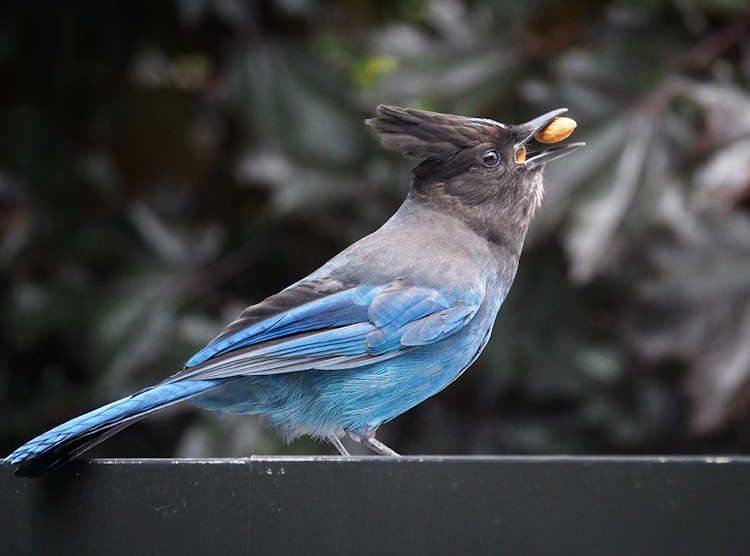
We don’t have a bird feeder at our apartment, so my limited interaction with hyper-local birds has been watching two Steller’s Jays hoard and cache the products of their foraging around the neighborhood.
Jays are obviously gregarious and tolerant of human presence. They were among our favorite baby birds to feed at the wildlife hospital because of their outgoing personalities. Of the two jays who come around our place, one is more bold than the other, often standing on the rail outside my kitchen window staring in at me and my Mac. We think this jay might have been fed from the back door before we moved in. I will put out a few almonds on the deck when he taps on the window.
About the time these jays showed up, I’d just read a 1999 study from the University of British Columbia which showed how Steller’s Jays benefit Garry oak ecosystems by stashing acorns which are then protected from other foraging animals. Of the acorns not predated by animals, the ones buried by Steller’s Jays had a much lower mortality than the acorns left on the surface. So, among the recommendations for protecting Garry oak stands, were these two relating to Steller’s Jays:
- Steller’s Jays prefer habitats with sparse herb cover, dense shrub cover, and dense tree cover. Habitats with this vegetation structure should be retained to ensure that jays remain part of the ecosystem. Dispersal of acorns to sites favourable for oak regeneration requires that acorns are also transported by Steller’s Jays to sites with sparse shrub and tree cover. This process is facilitated by the juxtaposition of these habitats with habitats preferred by Steller’s Jays. Patchy, complex vegetation structure should therefore be retained if present, and creation or restoration of these conditions should be considered.
- Scattered trees should be planted in open areas to facilitate transport of acorns by Steller’s Jays.
I love finding nuggets like the above because birds like Steller’s Jays are sometimes maligned for ‘stealing’ fruits and nuts from trees. Although they appear to have accurate recovery of cached sources, some buried seeds obviously remain to germinate. And, the cycle of caching nuts has a hierarchical aspect I observed while living at tree level in our previous Oakland digs. The cycle we most often saw was:
- Squirrel finds nuts or acorns and buries them in multiple sites around the garden.
- Local Scrub and Steller’s Jays watch squirrel surreptitiously from the branches above.
- Squirrel leaves — jays descend and pick the nuts from one or two of the buried locations.
- Jays stash the nuts in a rain gutter or on top of a utility pole.
- Unbeknownst to the jay on the utility pole, a crow has been watching from a nearby tree and swoops onto the stash after the jay flies away.
Although my personal observations were informal and anecdotal, there was always a percentage of buried treasure that was never recovered by any of the foraging animals.
Jays are high on my list of favorite birds, as are all corvids. Every time I look at a Steller’s Jay, I’m fascinated by the variations in plumage — the hints of blue apparent on one day that were subdued by Northwest clouds on another. I love the changeability of their crest, morphing from tiara to greaser in an instant. More than anything, I appreciate the linkage these two jays provide … between my urban, modernist domicile, and the slightly more bucolic one I knew and will know again.

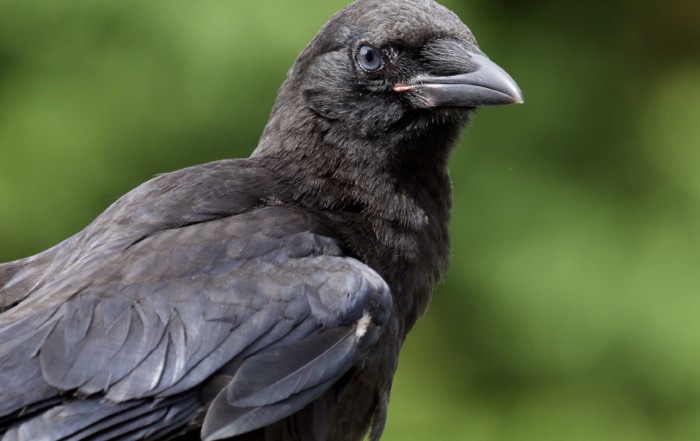
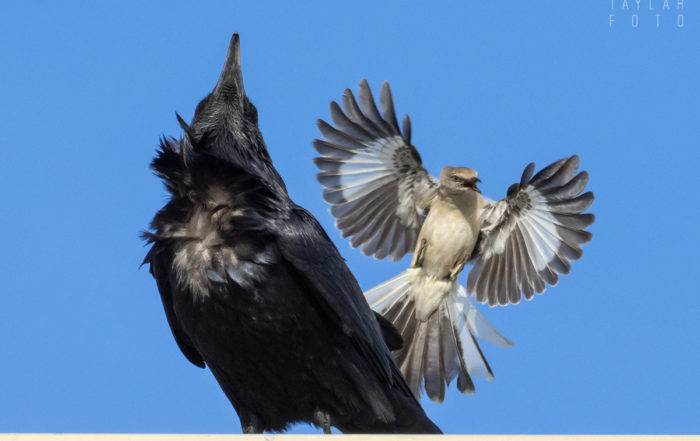
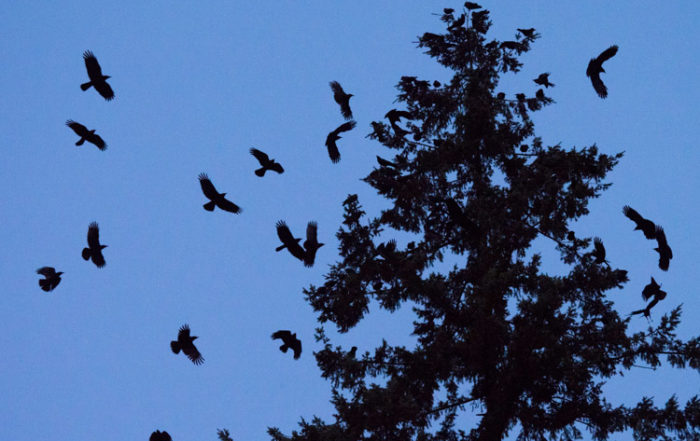
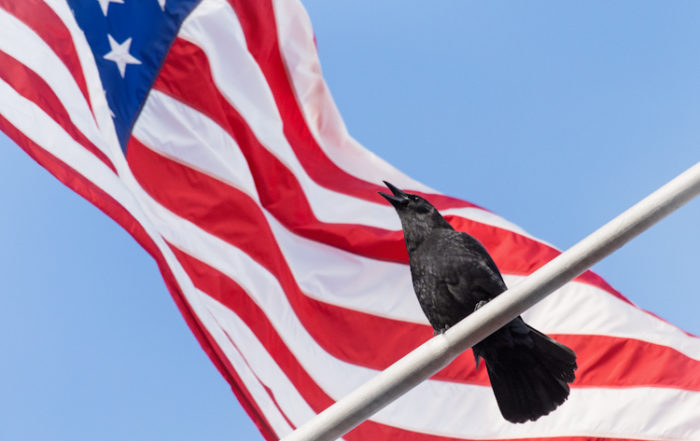
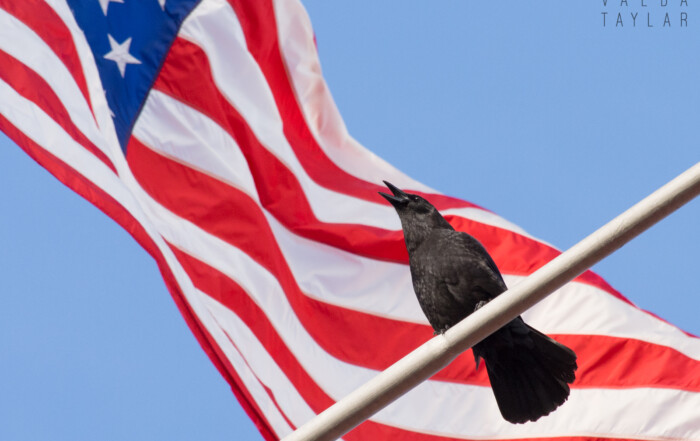
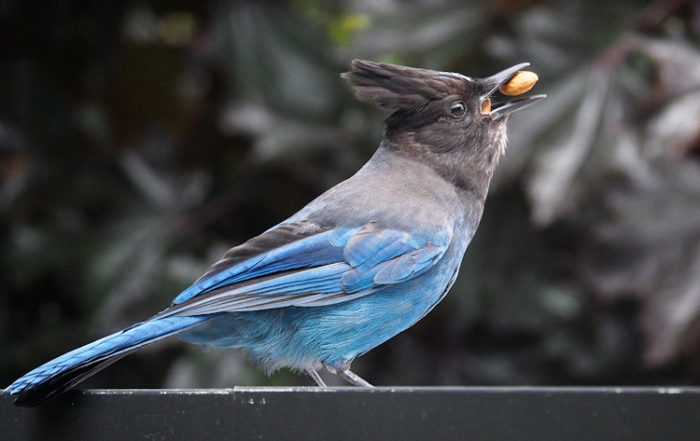
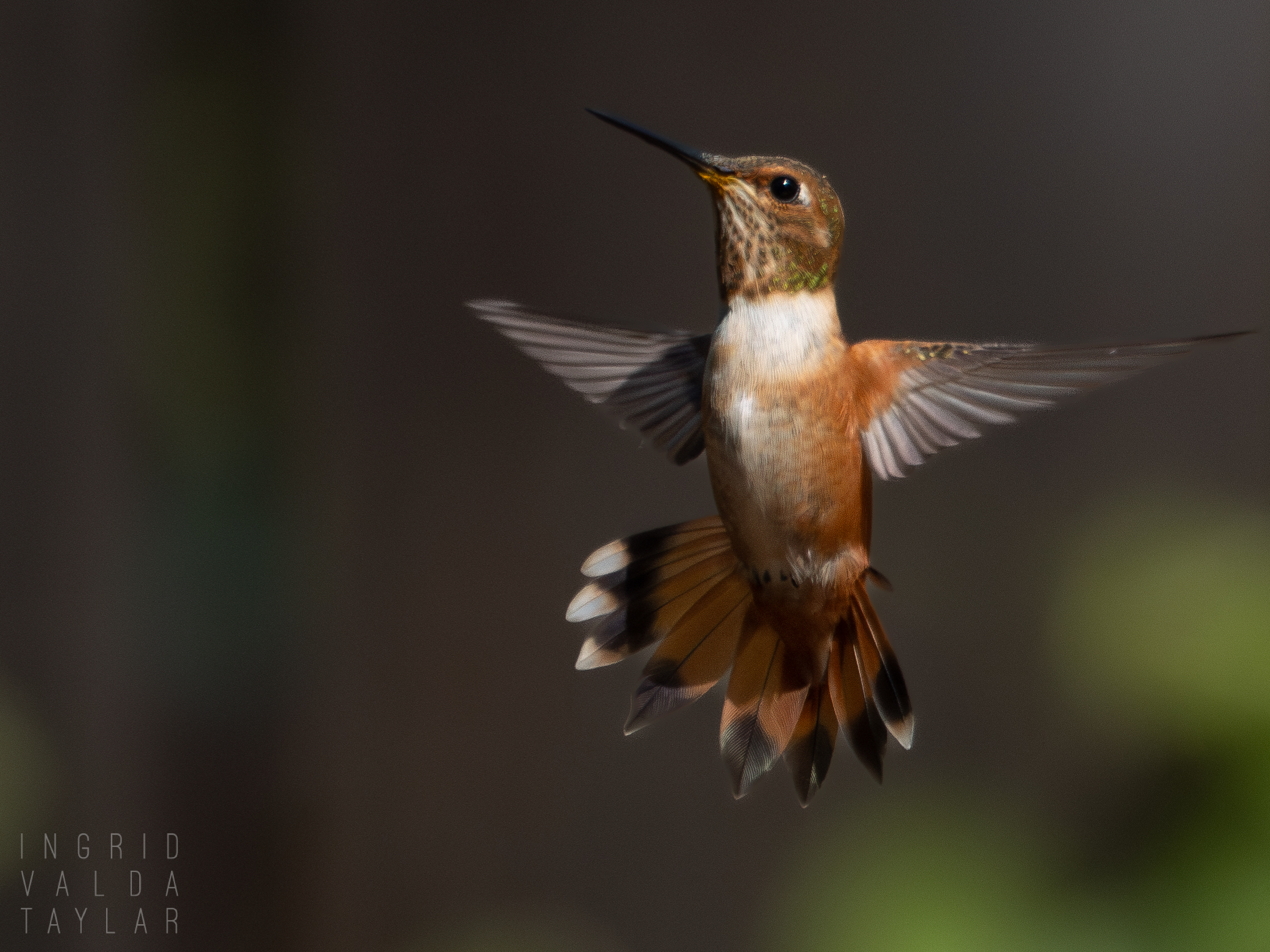
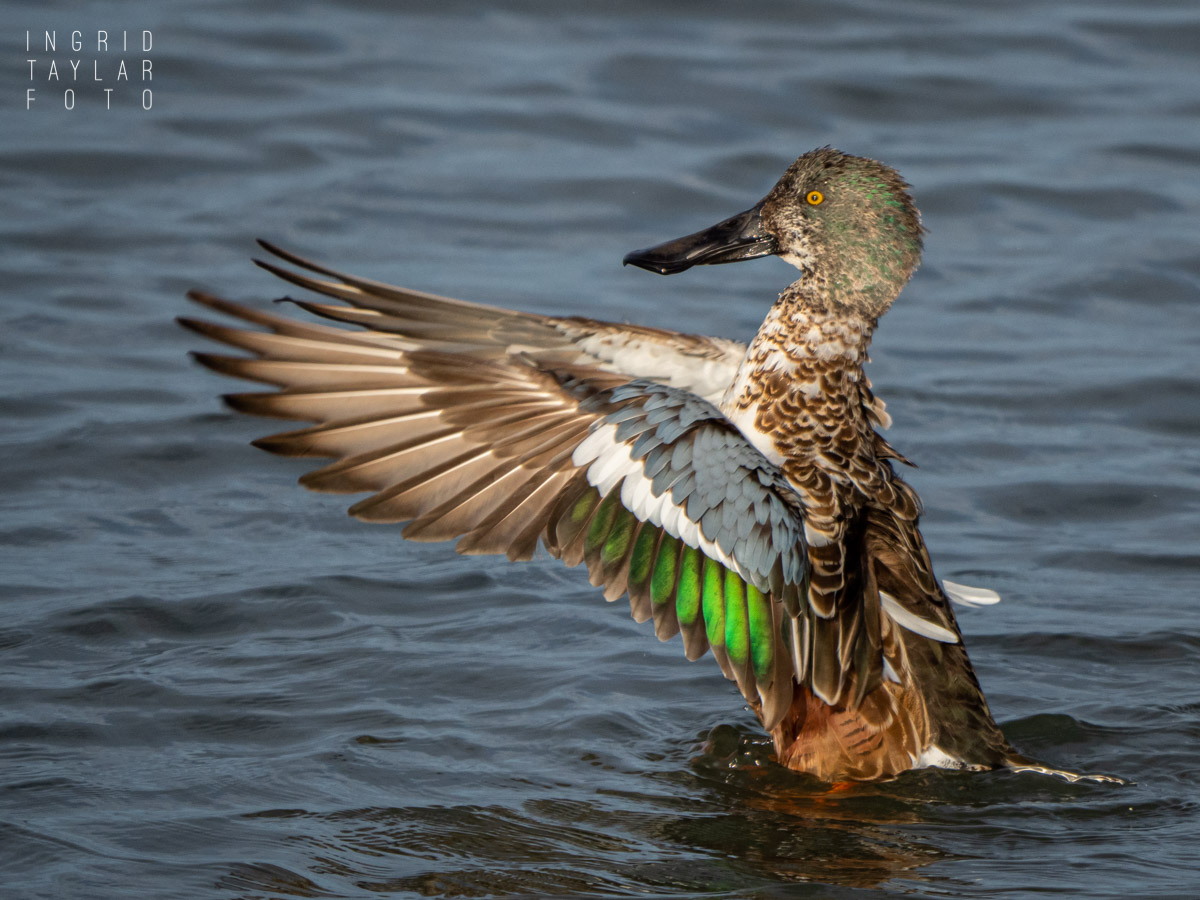
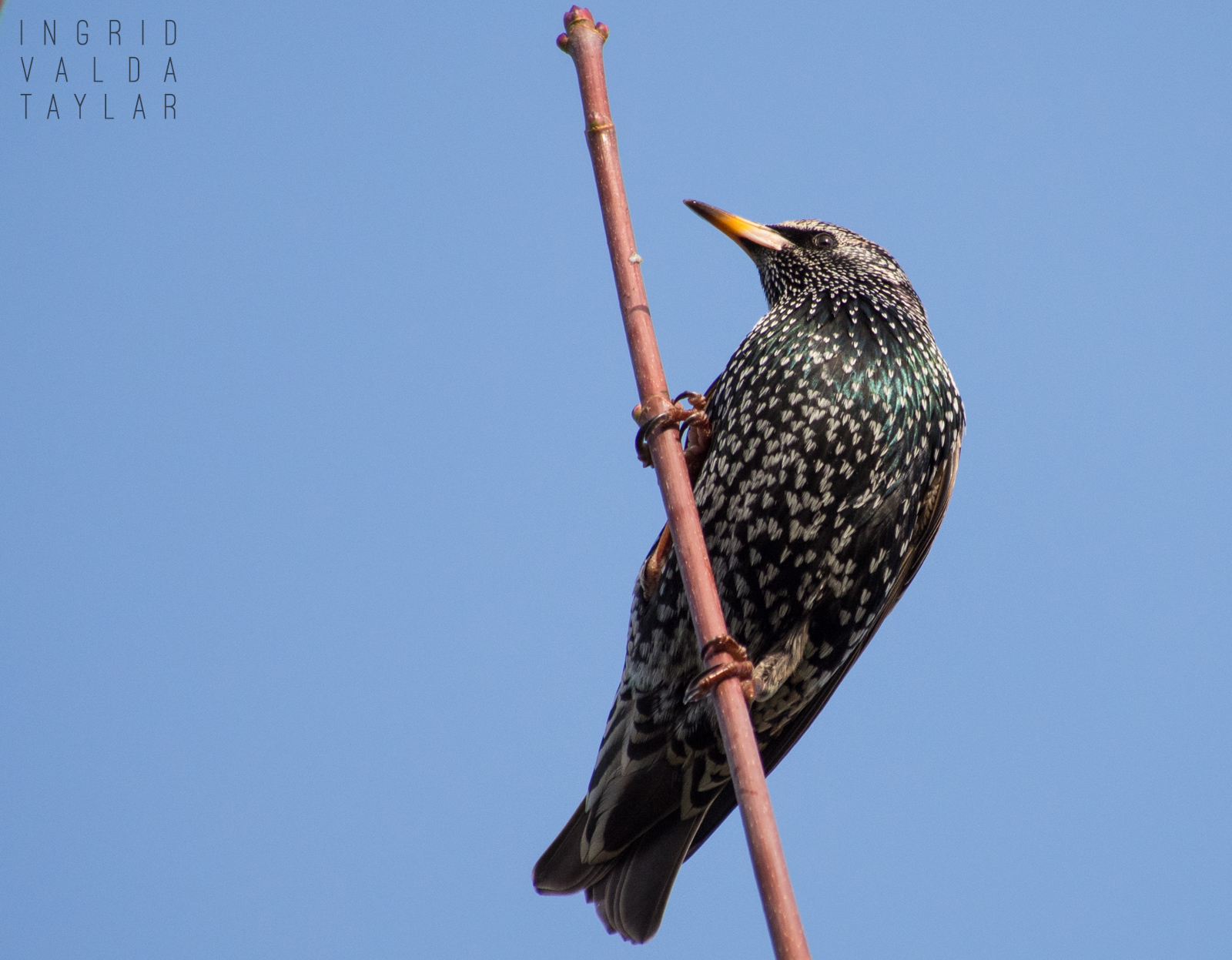
Ingrid,
I love corvids too. I liked reading the information your provided about the Stellar’s Jays, we need more of them to help replant the forests.
I always think it’s hard not to love them … but some people feel differently. We knew one volunteer who refused to feed baby jays because she “disapproved” how they interacted with songbirds. She was clearly an anomaly in a field where most people didn’t make those types of judgments. We reminded her that jays have their share of harassment from other birds, and so on and so forth — up, down and around the food web — but her negative perception prevailed of these amazing birds.
I love this kind of post – informative, unbiased, very well written and illustrated with a good quality photo that is appropriate to the subject. Amazing that your jay image was taken through a window – yours are obviously cleaner than mine! Great post Ingrid.
Thanks very much, Ron. It’s interesting you say that because at a previous web-writing job I had, my editors emphasized blog writing as creative and, of course, accurate … but also inherently biased, owing to the personality or point of view that set the blog apart from straightforward hard-news or evergreen content. Hmmm. If you look closely here, you might see some bias by omission: I didn’t present the counterpoint to the jay’s caching benefits.